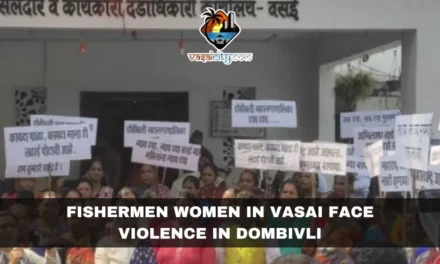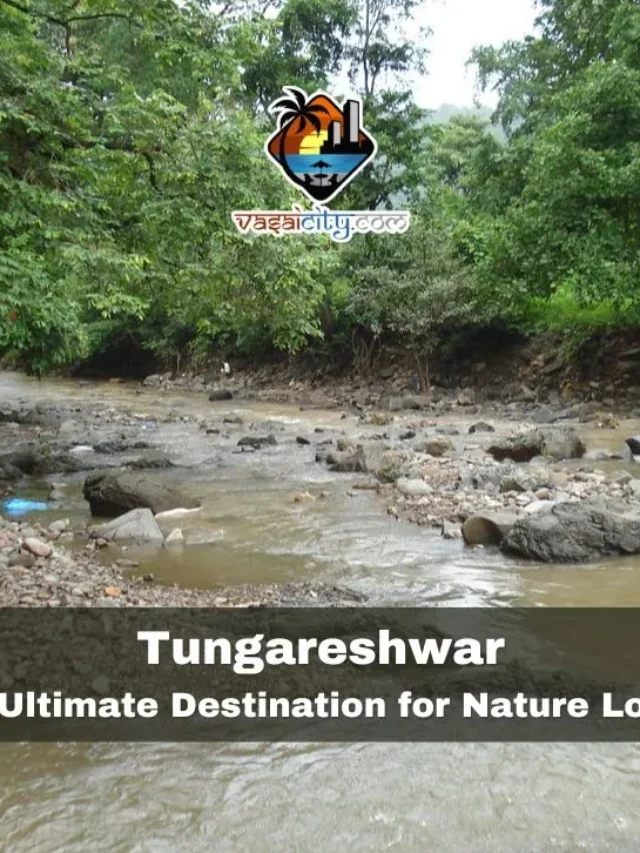On a calm Sunday morning, the usually busy Mumbai-Ahmedabad National Highway turned into a site of peaceful but powerful protest. Citizens of Vasai, angered by the poor quality of roadwork on this crucial highway, formed a human chain stretching from Vasai Phata to Chinchoti. Around a thousand people participated, unified in their demand for better infrastructure and safer roads.
The protest was organized in response to what locals describe as substandard and poorly planned concrete work on the highway. This road is a vital artery that connects the eastern parts of Vasai to the larger Mumbai-Ahmedabad route. However, the ongoing construction and repair work on this stretch has left much to be desired. According to the residents, the concrete work being done is not only of low quality but is also leading to a host of other issues, including traffic congestion and accidents.
For many months now, the citizens of Vasai have been facing serious problems due to the poor condition of this highway. The route, which should facilitate smooth travel, has become a nightmare for daily commuters. Instead of easing traffic flow, the substandard work has resulted in a road filled with potholes, uneven surfaces, and dangerous conditions that have caused several accidents. This situation is particularly frustrating for the residents who rely on this highway for their daily commute, and the industrial sector in Vasai-Virar, which is also heavily impacted by the poor road conditions.
The final straw came when repeated complaints to the highway authority were met with little to no response. Frustrated by the lack of action, the NH 48 Action Council, a local social organization, decided to take matters into their own hands. They organized the human chain protest, drawing a large number of participants who held placards expressing their anger and demanding immediate action from the authorities.
One of the key figures in the protest, James Kannampura of the NH 48 Action Council, voiced the concerns of the people. “The concrete work done on this stretch of the highway in Vasai-Virar is of very poor quality. If the work continues in this manner, how can we expect the roads to last? Our demand is simple: the highway authority must repair the potholes and ensure that the concrete work is done properly,” said Kannampura.
The protest itself was a significant event, not just because of the number of people involved, but also because it highlighted the broader issues at play. The highway in question is not just any road; it is a critical part of the national infrastructure, connecting Mumbai to Ahmedabad. The poor quality of work on this highway affects not only the local residents but also has wider implications for transportation and trade between these major cities.
The protestors, holding hands in a show of solidarity, were united in their message: the current state of the highway is unacceptable, and immediate improvements are needed. Many of the participants carried signs condemning the highway authority for its negligence and demanding that the issues be addressed without further delay. The human chain stretched for kilometers, a visual representation of the community’s frustration and determination to see change.
The poor quality of the concrete work has also raised questions about the overall planning and execution of the project. Residents have pointed out that the work appears to be haphazard, with no clear strategy for ensuring that the roads are safe and durable. The lack of proper planning has led to frequent traffic jams, as parts of the road are often blocked off for repairs. This not only causes delays but also increases the risk of accidents, as drivers navigate through the uneven and poorly maintained surfaces.
The industrial sector in Vasai-Virar, which is heavily dependent on this highway for transporting goods, has also been severely affected. Delays caused by the poor road conditions are leading to financial losses, as businesses struggle to get their products to market on time. The situation is becoming increasingly untenable, and there is a growing sense of urgency among the local population for the authorities to take action.
The protest on Sunday was not just a demonstration of anger but also a plea for accountability. The residents of Vasai are demanding that the highway authority take responsibility for the poor quality of work and make the necessary repairs to ensure that the road is safe for all users. They are also calling for greater transparency in the planning and execution of such projects, to prevent similar issues from arising in the future.
As the human chain stretched across the highway, it was clear that the people of Vasai are no longer willing to accept the status quo. Their message was loud and clear: they want safe, well-maintained roads, and they are prepared to fight for it. The protest ended peacefully, but the participants made it clear that they will continue to press for their demands until they see real change.
In the days following the protest, there has been a growing discussion in the local community about the next steps. While the human chain was a powerful statement, many are now calling for further action, including legal avenues and continued public demonstrations, until the authorities address the issues with the highway. The citizens of Vasai have shown that they are united in their cause, and they will not rest until their voices are heard.
In conclusion, the human chain protest on the Mumbai-Ahmedabad National Highway was a significant event that brought to light the serious issues facing the residents of Vasai. The poor quality of roadwork, coupled with the lack of response from the authorities, has created a situation that is no longer tolerable. The protest was a clear signal that the people of Vasai are demanding better infrastructure and are prepared to take a stand to ensure that their roads are safe and well-maintained. It remains to be seen how the authorities will respond, but one thing is certain: the citizens of Vasai will not back down until their demands are met.













